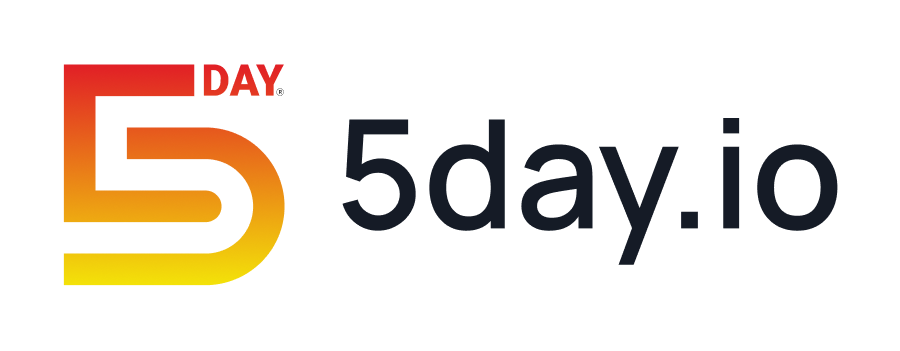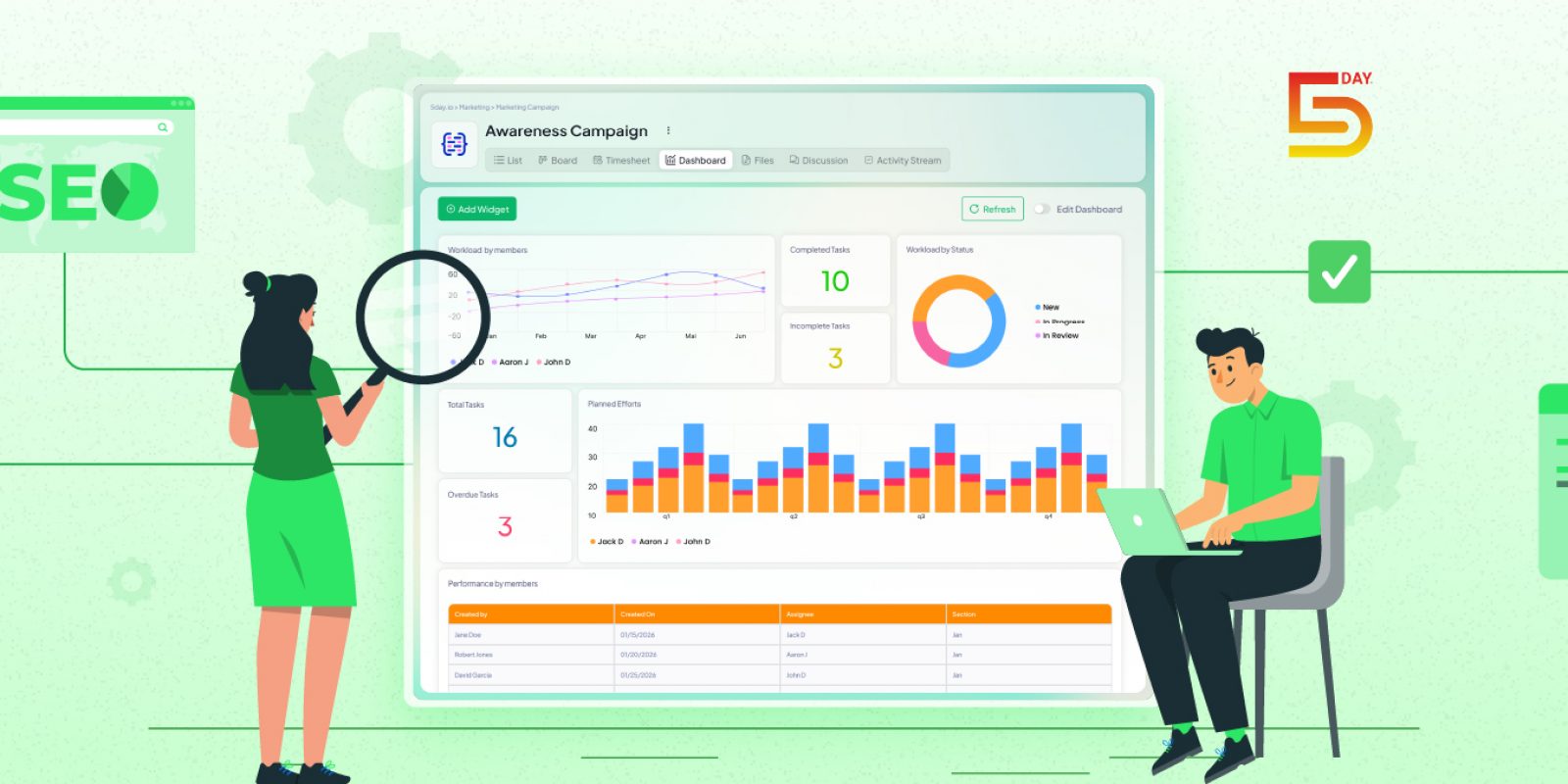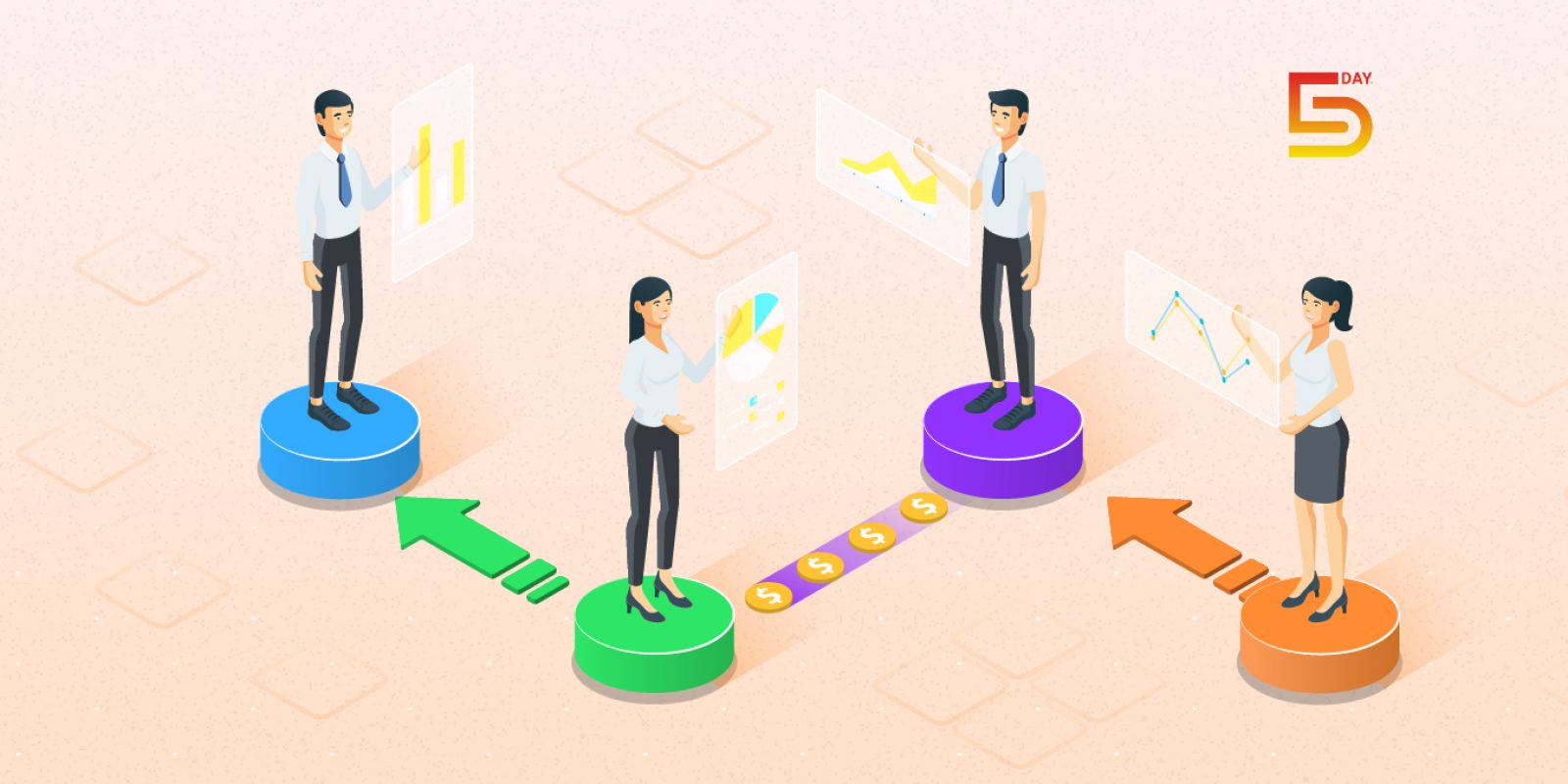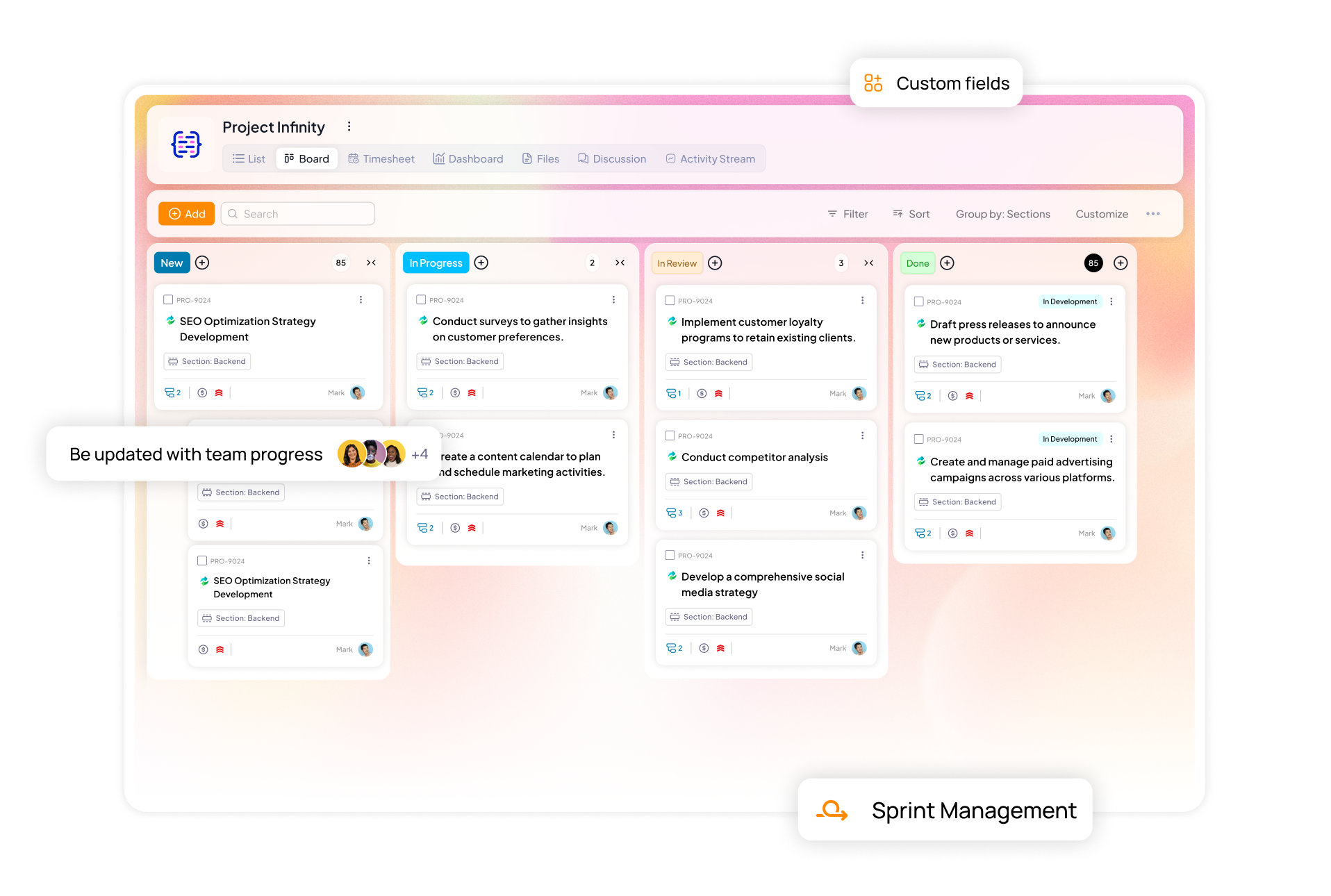Today’s agency leaders already sense the shift in technology. AI can draft campaign outlines in seconds. Tasks self-assign based on workload data. Teams spread across continents plan launches as if they’re in the same room.
These have become daily realities.
A recent McKinsey report found that tasks making up 30% of hours worked across industries could be automated by 2030, with marketing among the early adopters.
The future of work management for marketing agencies means weaving these capabilities into systems that teams trust. In short, it means using systems that keep workloads sustainable and results consistently strong.
In this blog, you’ll explore the top trends shaping work management for marketing teams. Let’s learn how agencies can stay ahead in the market and launch campaigns with confidence.
Why traditional workflows no longer work for agencies
It’s an open secret that legacy tools and manual processes drain the team’s energy.
Today, agencies are scaling and becoming more complex by the day. They work on campaigns with dozens of channels and stakeholders.
Yet too often, teams rely on disconnected tools or spreadsheets. This creates inefficiency at every turn. One industry report highlights how manual workflows burden agencies with duplicate efforts and extensive copying and pasting.
Worse, these gaps spread across every campaign. In fact, according to Wall Street Journal, 55% of organizations still use spreadsheets for core functions like budgeting and forecasting, which adds to the human-generated errors and risk.
This kind of friction hits productivity and morale. Managers spend too much time handling updates instead of guiding strategy. Teams can’t see the full picture, so accountability takes a hit. To fix this, agencies must scale smart and use the right marketing team project management software to avoid manual work.
Putting it in practice, this means replacing email chains and static docs with a unified platform where all tasks, files, updates, and conversations live. Instead of each campaign existing in a separate spreadsheet, modern work management tools create central hubs. In these hubs, everyone from copywriter to account director sees the required aspects of the same plan.
Old workflows cost agencies time and errors. Shifting to integrated, tool-based processes is the way to survive and grow.
Top trends redefining work management in 2025
So, what does the future look like? Several trends are shaping the future of work management for marketing agencies. These workplace trends are practical shifts that will define how your team plans and delivers impactful campaigns at scale.
Here’s what the future of workplace will look like in 2025 and beyond.
AI-powered automation
Artificial intelligence is everywhere these days. By 2025, AI will automate routine agency tasks, freeing humans for creative strategy. McKinsey observes that AI will “automate cognitive functions,” not just manual ones.
Think of AI auto-tagging assets or predicting campaign outcomes. In resource planning, AI tools can allocate team members to create a real-time view of their global resources and their current and future allocation.
Agencies will use AI to auto-schedule meetings or summarize status meetings. This trend cuts grunt work and reduces burnout.
Pro tip: Encourage teams to experiment with AI assistants. People who know how to work with AI will generate more value as it will become a standard practice.
Real-time collaboration and client engagement
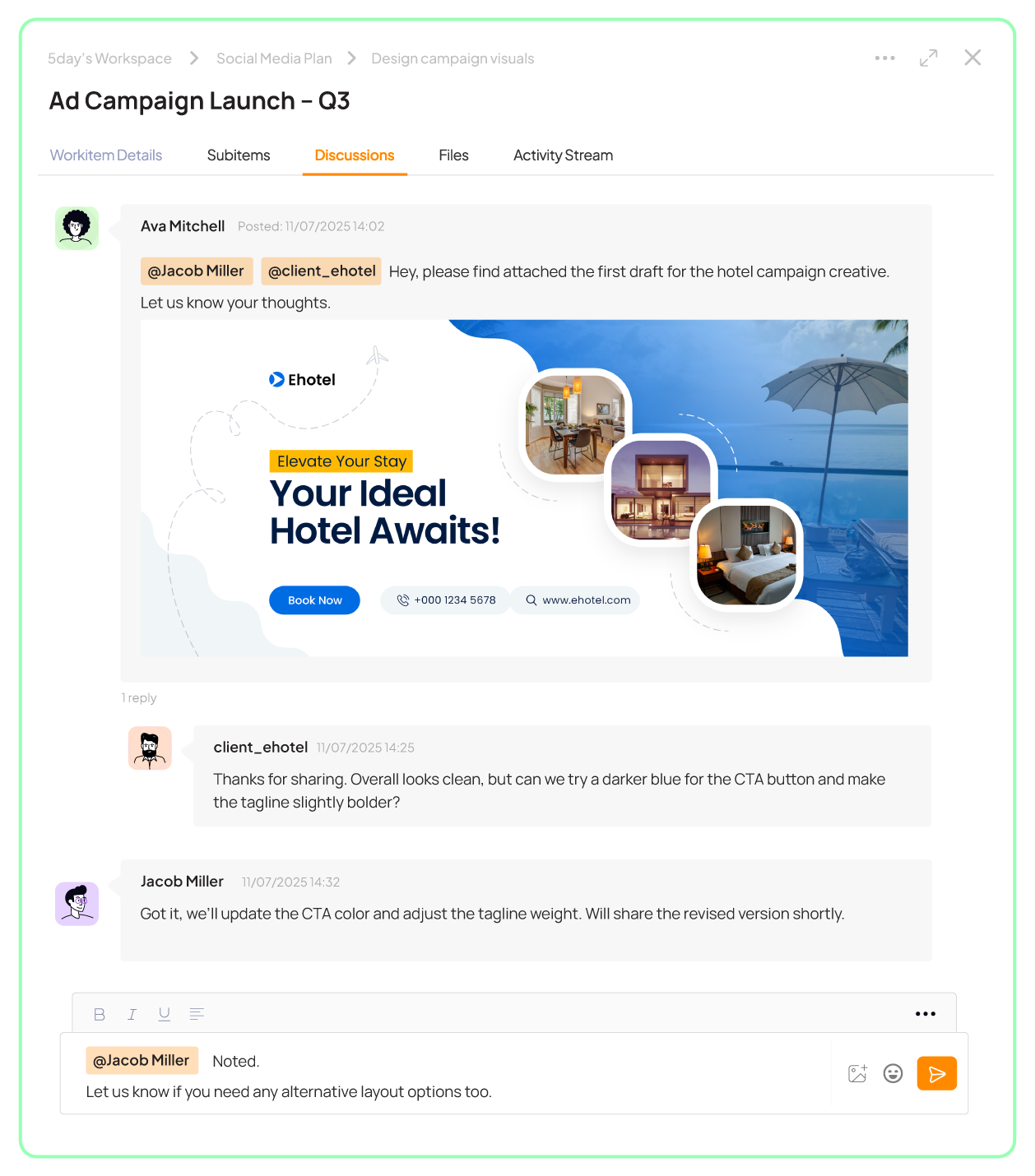
Clients now want a seat at the table 24/7. Virtual whiteboards and instant feedback loops are becoming a baseline requirement. Modern agencies offer clients real-time portals (shared dashboards where clients can view status at any time) and collaboration tools (chats, comments on assets, etc.).
For example, platforms like 5day.io offer a single workspace with multiple views so every stakeholder sees up-to-date progress.
The emphasis is on one truth with one task list and one asset library. The old model of “email me the files” is less efficient.
Integrated MarTech stacks
Fragmented technology stacks frustrate teams due to overcomplexity. The smarter approach is integration. It means tools working together so data flows smoothly.
In 2025, top agencies invest in platforms that combine project and campaign data. For instance, tasks in the project tool might auto-update budget spend in the finance system or push campaign metrics into dashboards.
This mirrors broader workplace trends, indicating 59% of marketers now prefer integrated suites over scattered best-of-breed apps (Gartner). Agencies that align their PM software with analytics and Creative Cloud will gain efficiency.
Higher MarTech integration also improves visibility. Instead of toggling 5 apps to answer routine questions, managers see consolidated reports in one place.
Faster decision-making based on data
Marketing moves faster than ever now. Teams rely on live dashboards showing campaign metrics alongside project progress. Real-time reporting and alerting mean leaders see issues immediately.
Using real-time data, companies can make faster decisions and deliver better results. Analytics helps teams to find patterns and improve their processes.
With the help of data, teams can further increase workplace efficiency. This eliminates the guesswork and helps the team make fact-based decisions for better outcomes.
Essentially, agencies will act like tech startups working with data and iterating on-the-fly.
More focus on cybersecurity in the workplace
Agencies and workplaces these days rely on digital tools and platforms. As a result, cybersecurity is essential to work without hiccups in 2025. It means agencies can’t go without secure workplace management systems, keeping cyber threats at a distance.
While cybersecurity has been a norm for a long time, agencies need better strategies as technology evolves. They need advanced encryption, multi-factor authentication, and continuous monitoring systems.
Exposing sensitive data can damage a company’s reputation. With the right cybersecurity, marketing agencies can reduce the risk of data breaches and cyberattacks. Further, this helps build trust with partners and other stakeholders.
Must-have elements of work management for agencies
Agencies looking not to fall behind need a better work management foundation. They can follow the above work management trends 2025 using these key elements:
Unified workspace
A single platform where projects, tasks, files, and chats converge. This workspace is campaign-centric, making it easier for teams to plan and follow through with the campaigns.
As a result, teams gain a single source of truth that supports strategic decision-making. Leaders can see priorities at a glance and reallocate resources before bottlenecks slow things down. This helps teams stop duplicating work or chase missing files.
When you treat each campaign as a project template, every launch follows a proven plan instead of starting from scratch each time. This repeatable structure not only saves time but also builds confidence across your team and clients.
Read more about practical tips on how to create a realistic marketing campaign plan
Sprint-based workflows
Many top agencies adopt agile best practices. Teams break work into short “sprints” or pods, focusing on specific goals. This structure boosts focus and morale.
Agile pods help marketing organizations create campaigns faster, achieve higher ROIs, and enhance collaboration and morale.
Ideally, a pod includes a strategist, designer, copywriter, and project owner. They plan a 2-week sprint of tasks for a campaign slice. At sprint’s end, they review wins, learn, improve, and plan the next batch. This iterative flow keeps momentum and surfaces roadblocks quickly.
Pro tip: Start small and use time-boxed Kanban or sprints for one project, then scale up if it brings positive results.
Integrated reporting and dashboards
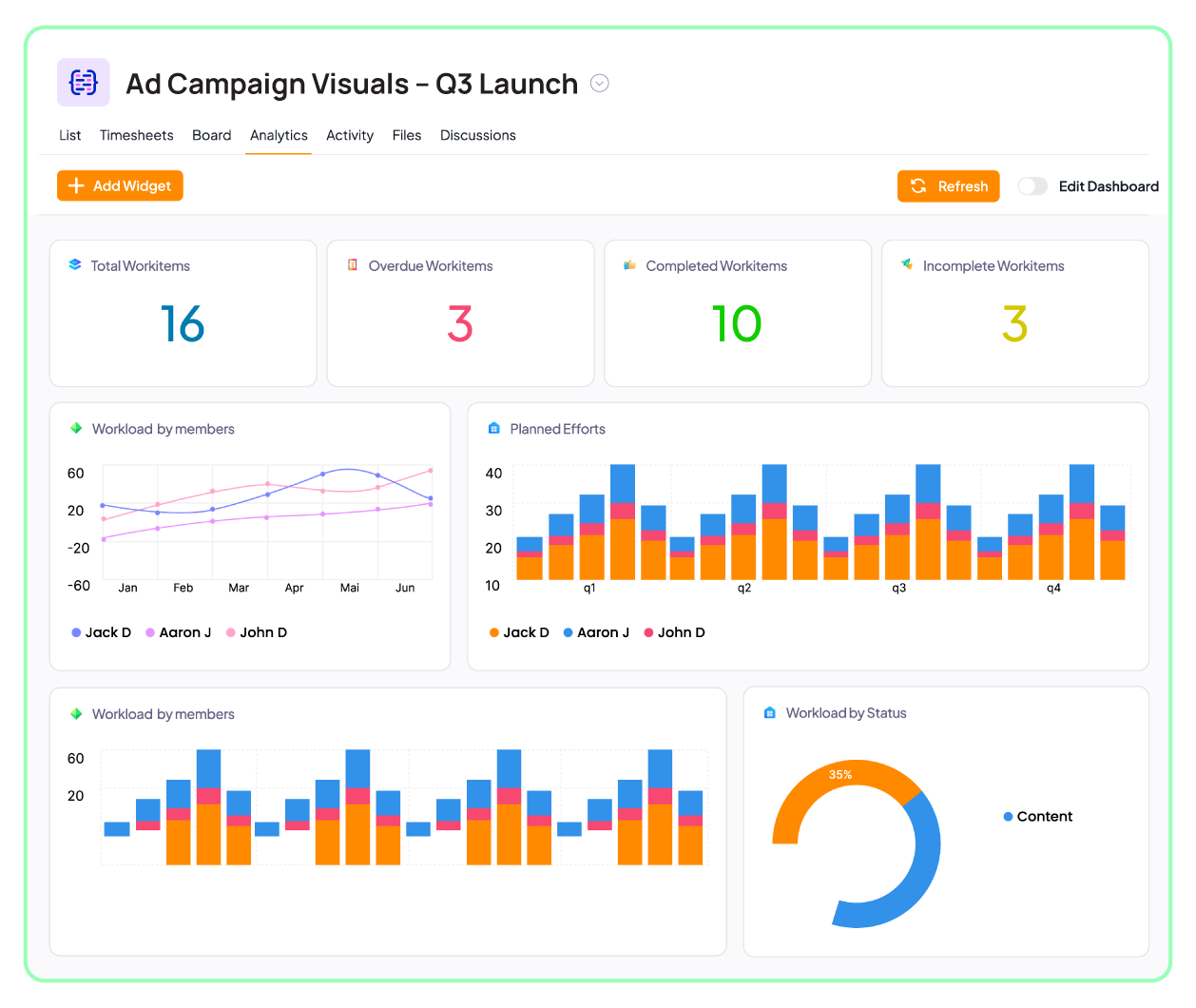
Marketers work on measurable goals. Modern PM tools link tasks to outcomes. A good tool offers dashboards that roll up campaign status across tasks. For instance, 5day.io provides widgets and charts in multiple views like line, bar, graph, table etc., so you can visualize progress and time logs.
These dashboards highlight blockers and help track progress. In short, you can answer “what’s the ETA on this task and what did we deliver so far” with a click. Transparent metrics enable data-driven decisions and show clients the ROI of every campaign.
Scalable team structures
As agencies grow, so must their processes. Work management platforms for marketing teams should support roles, permissions, and templates. For example, 5day.io lets you define custom roles and permissions for controlled access.
You can clone successful campaign templates across accounts. With one click, you set up a new campaign using a proven task list. It helps build governance without sacrificing agility. This lets agencies add clients or offices without chaos.
Pro tip: Use templates and permissions to maintain consistency. Then your operations will scale by process instead of just headcount.
These elements together form the backbone of next-gen work management future for marketing agencies. They ensure every team, from designer to owner, is moving in lockstep toward client goals.
How 5day.io enables the future of work management for marketing agencies
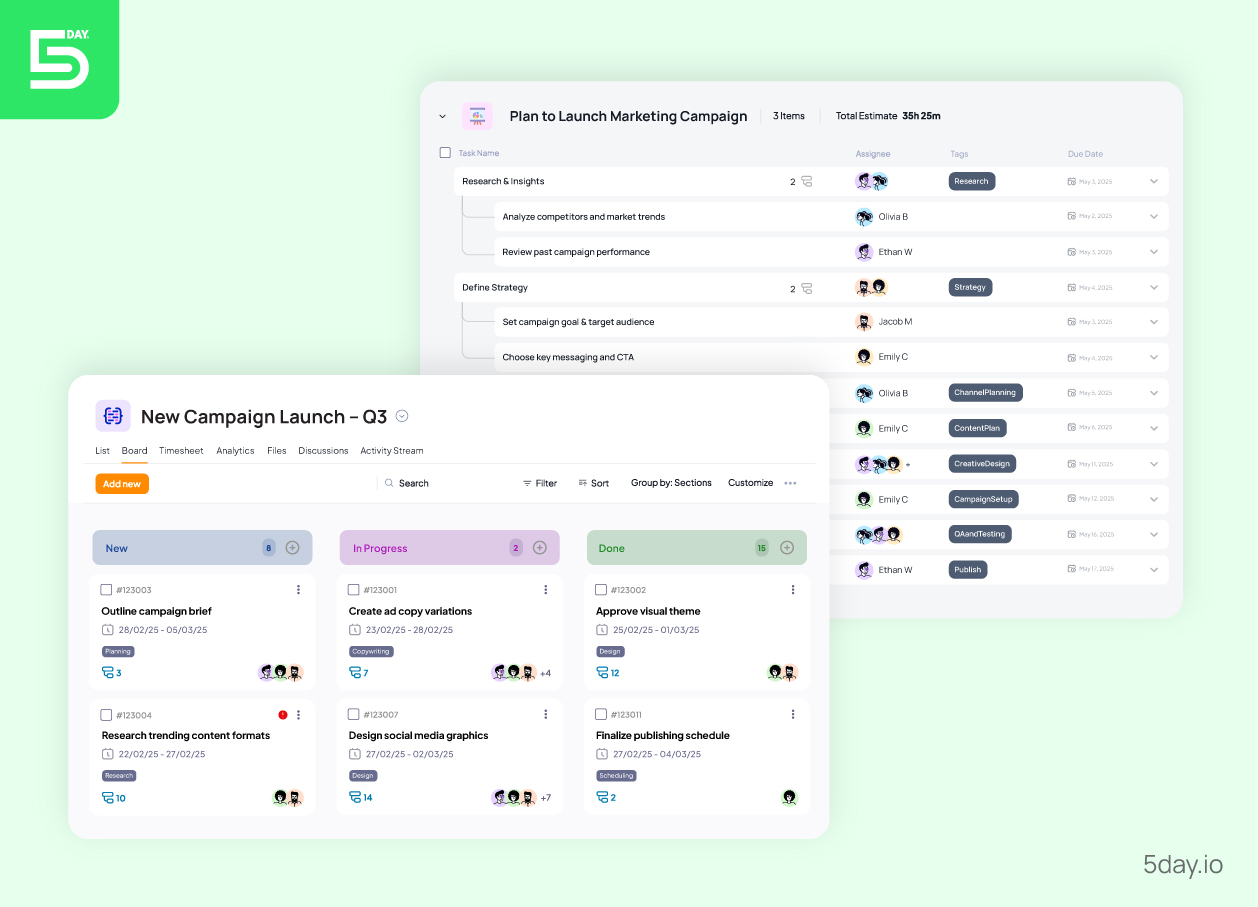
The trends shaping the future of work management for marketing agencies include AI-powered automation, real-time collaboration, integrated MarTech stacks, data-driven decisions, and stronger cybersecurity. These workforce management trends are the need of the hour for marketing agencies.
So, how marketing agencies will manage work in 2025? Adopting these workplace trends successfully requires more than scattered tools or add-on features. Agencies need a project management tool that ties them together into workflows that teams trust.
That’s where 5day.io comes in.
5day.io brings these future-focused trends to daily work:
- Draft campaign outlines faster using built-in templates and task reminders, so teams focus on strategy
- See unified campaign boards with multiple project views, giving everyone the same real-time visibility
- Turn scattered data into insights with integrated reporting dashboards that connect project progress with campaign performance
- Connect your MarTech stack seamlessly with Google Drive, OneDrive, and other integrations
- Assign clear roles and permissions to bring clients or teams onboard without confusion as your agency grows
- Keep client data safe with built-in security and controlled permissions
With 5day.io, your team gets a workspace that supports how they already work. It reduces blockers and gives them a reliable system for better collaboration.
Ready to future-proof your agency’s workflows? Start free with 5day.io for 30 days – no credit card needed.
